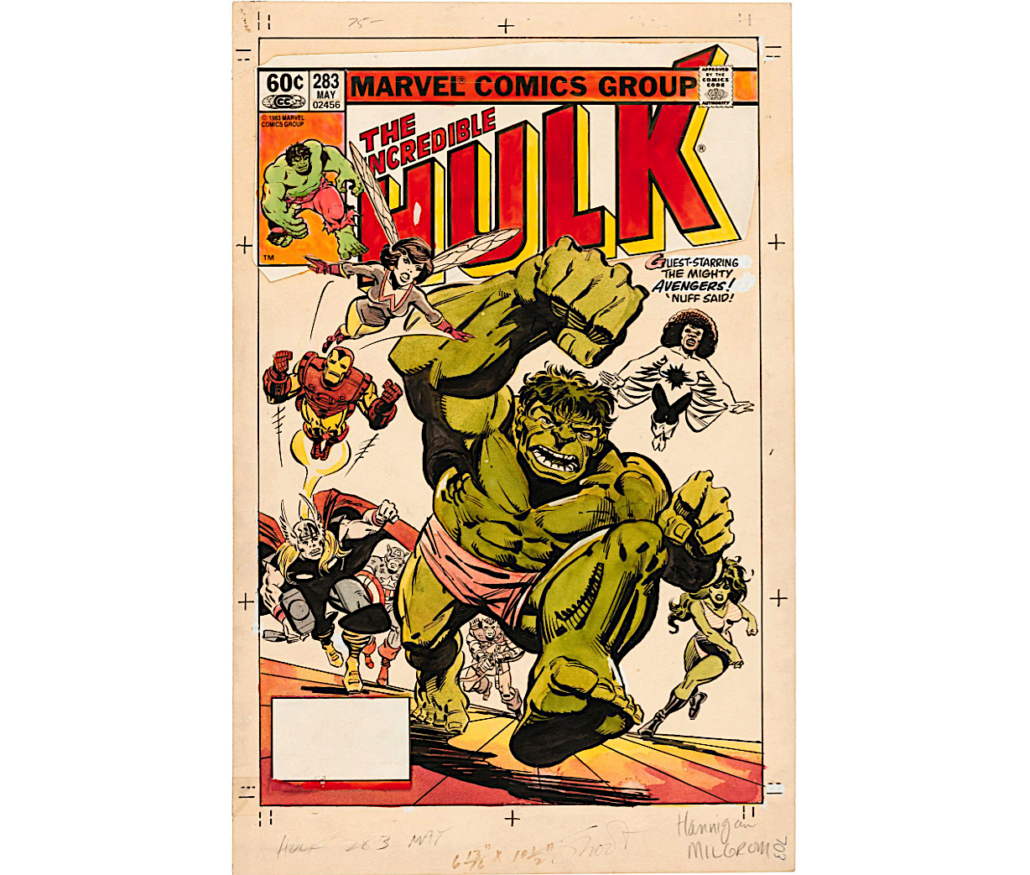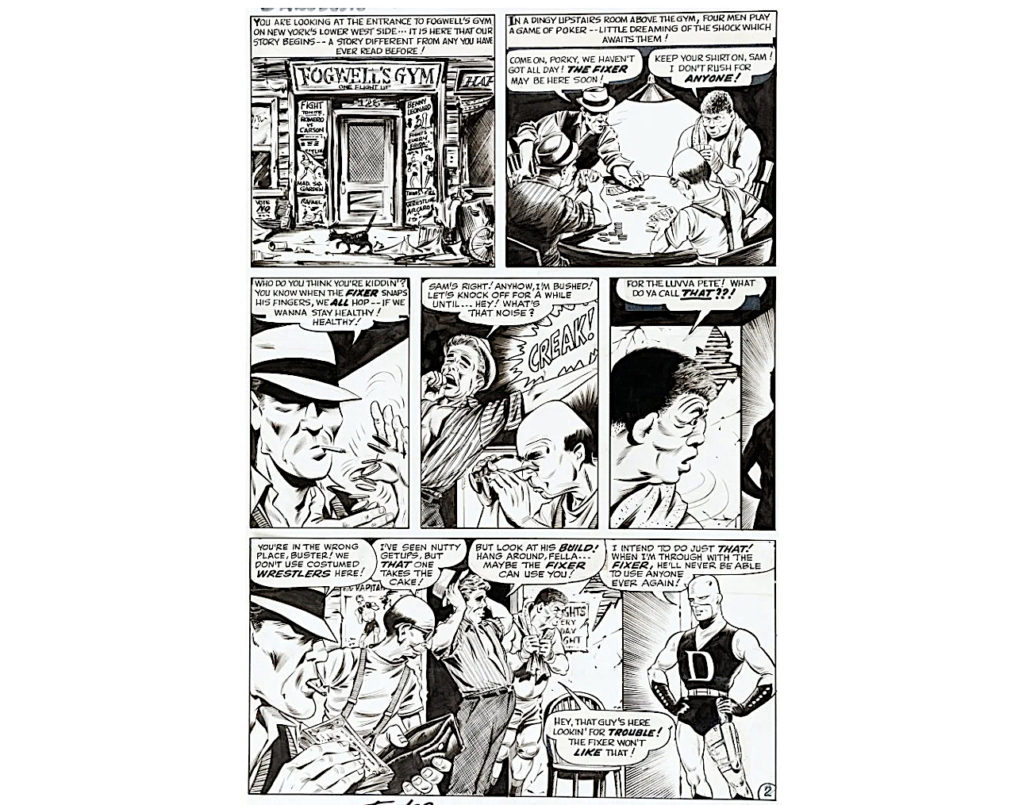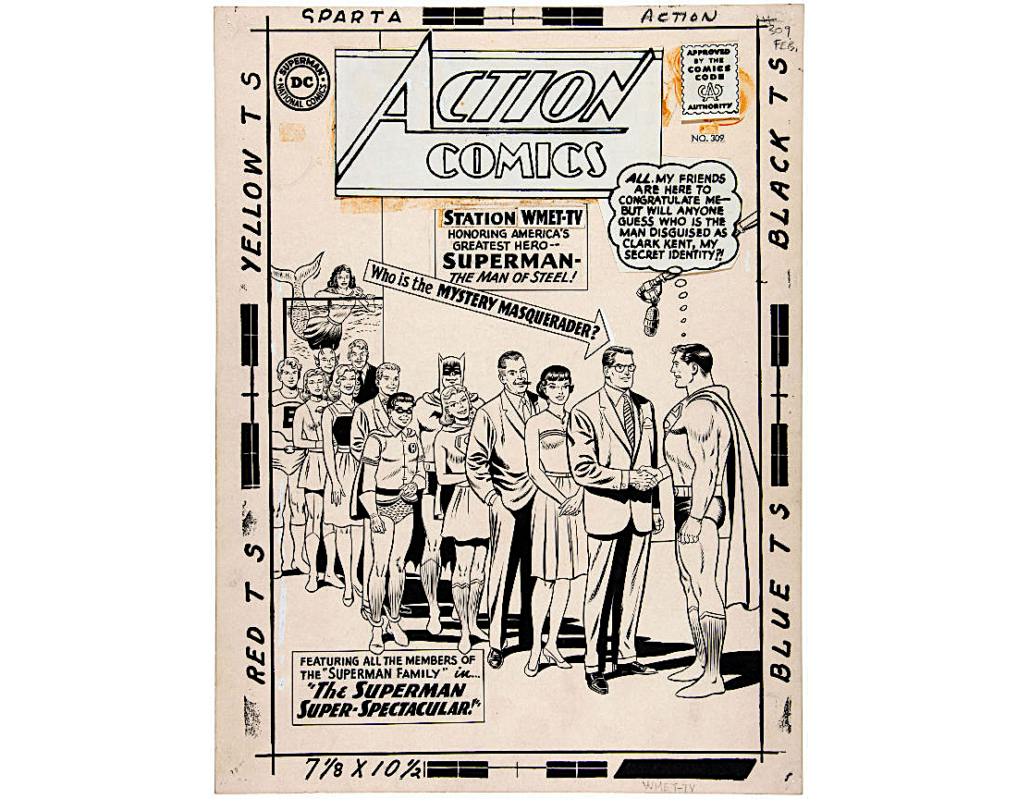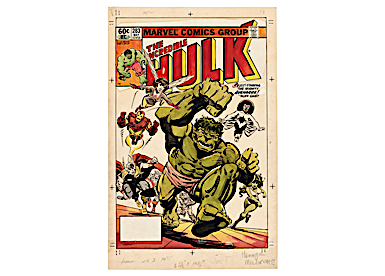
NEW YORK — People of all ages buy comic books to read for pleasure, and a subset of them enjoy collecting investment-grade examples. Still others chase the original hand-drawn illustrations that are reproduced en masse in the actual comic books. “This is another level of fan that very much revels in owning one-of-a-kind works of art,” said Alex Winter, president of Hake’s Auctions in York, Pennsylvania. “It is this unique nature that makes comic art highly sought after by that crowd.”
Original comic book art is art created for a comic book and, aside from its content, its appearance can vary. “It can be in pencil, pen and ink, fully painted, or these days digital,” Winter said, explaining it can sometimes have added text, logos and titles on it. Typically, they are rendered in black-and-white pen and ink, but sometimes they are fully colored.
There tends to be a hierarchy in collecting original comic book art, with covers generally being most valuable, followed by splash pages and other interior pages. A splash page is an interior page containing a large single image. It’s usually the first interior page, created to hook the reader.
This is not a hard-and-fast rule, however, as collecting is highly subjective. Content is king; a notable or action-heavy interior scene might prove more valuable than a cover. “The first appearance of a character, not seen (or perhaps only mentioned) on the cover, can bring a premium price for that page, above said cover,” Winter said.

Reinforcing Winter’s point is the auction performance of the original artwork for page 2 of Daredevil #1, done by artist Bill Everett, which sold for $240,000 plus the buyer’s premium in April 2021 at Heritage Auctions. The panel introduced the character Daredevil and the cover art is not known to have survived, so this illustration might be the only original art element of the cover of the series’ premier issue still in existence.
By and large, comic book covers are desirable, given their prominence and their utility as tools designed to instantly attract buyers. A large format artwork on artboard, trimmed to 12⅜ by 18⅝in features pen and ink art for the cover of Metamorpho #7, published by DC Comics in August 1966. It brought $25,129 including the buyer’s premium at Hake’s Auctions in March 2022 and is notable for several reasons, first and foremost being the artwork was penciled by the late renowned illustrator Sal Trapani, who was active during the Golden Age of comics.

This pen and ink artwork for the cover of Metamorpho #7 (DC Comics, August 1966) brought $25,129 including the buyer’s premium in March 2022. Image courtesy of Hake’s Auctions and LiveAuctioneers.
The scene is action-packed and shows Metamorpho the Element Man coming out of a fiery volcano, flying toward the villain, as his lower body morphs into liquid magma. “While this has never been an A-list DC Comics character, it is one that has been around for decades and has a devoted following,” Winter said. “With this particular title, there were only 17 issues published, so only 17 covers were ever created. As far as we know, this is the only time one of those has come up at auction. The bidding we saw on this certainly reflected those factors.”
Another strong example of original comic book artwork is a 10-⅞ by 17in artboard for the cover of Incredible Hulk #283 that was hand-colored. It not only showed the Hulk in action, it featured a roster of characters from The Avengers, including Wasp, Iron Man, Thor, Captain America, Hawkeye, Captain Marvel and She-Hulk. The illustration earned $33,314 including the buyer’s premium in March 2022 at Hake’s Auctions. “Hulk is one of the most popular Marvel characters, and The Avengers are one of their most popular teams, and you have all of that displayed here on a character-driven cover,” Winter said. “Even with this cover being hand colored — we don’t know when or why — it had no impact on the value. We thought at first it might but once again we are talking about the only known example so it was this or nothing.”

Another standout original cover artwork was a 15- by 30-inch pen and ink piece by well-known Silver Age Superman comic book artist Curt Swan for the February 1964 issue of DC Comics’ Action Comics #309. It realized $112,015 including the buyer’s premium at Hake’s Auctions in November 2013. In this case, the value is not only in the artwork but in the circumstances under which it was issued. The cover features Superman greeting a line of friends and colleagues, including his alter ego Clark Kent, with whom he shakes hands. In the story, President John F. Kennedy helps Superman keep his secret identity by disguising himself as Clark (pictured on cover). While the issue is dated February 1964, it hit newsstands a week after Kennedy’s assassination in Dallas in November 1963. DC Comics could not recall the issue as distribution was already well underway.
“It is an amazing cover, one that has content like no other. The original owner bought it back in the 70s because of the JFK connection but also because he was a comic book fan/collector,” Winter said. “This is a case where the piece has it all — a historic issue, major characters and a key artist.”

Among collectible artists is Dave Stevens, best known for creating The Rocketeer. His original artwork for the cover of Alien Worlds #2 (Pacific Comics, 1983) made $100,000 plus the buyer’s premium in April 2021 at Heritage Auctions. It was one of the first covers he illustrated and it featured the character of Aurora, who he originally created back in the 1970s for a Japanese publication.
As with collecting comic books, collectors of original comic book art favor what suits their individual tastes, from comic books they loved as a child to artwork by a particular artist to introductions of key characters or specific titles. “This is the great thing about collecting comic book art — you customize to your own interests,” Winter said. “Deciding how deep you want to go down the rabbit hole is totally up to the collector.”


